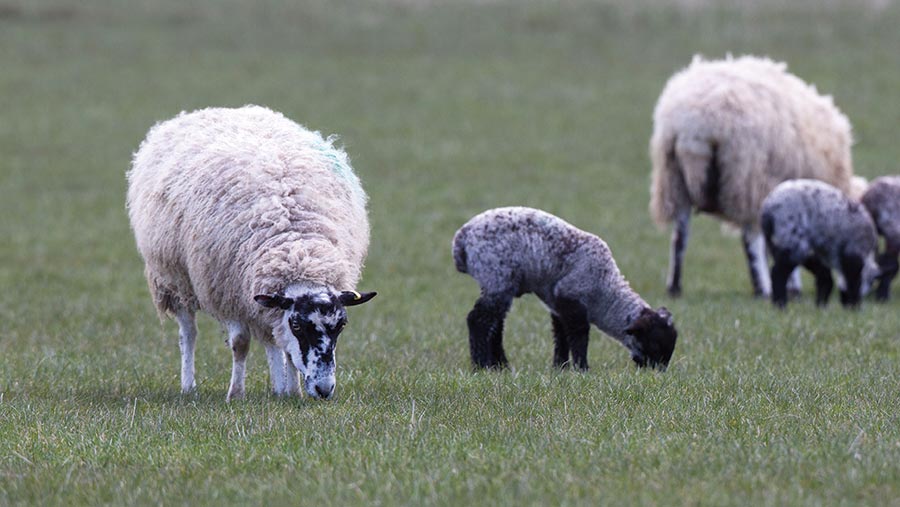Advice for dealing with fluke as high rainfall increases risk
 © Tim Scrivener
© Tim Scrivener High levels of rainfall have put livestock in Scotland, western England and northern parts of Wales at high risk of fluke.
Producers in the South West should also be on alert, with localised cases highlighted in the latest parasite forecast.
Speaking at a recent AHDB webinar, independent consultant Lesley Stubbings advised farmers to identify risk by looking for fluke presence in fields and carrying out tests to pick up infections.
Fluke eggs and cysts cannot be seen on pasture, so the best hope is looking out for tiny mud snails – the intermediate hosts – in their habitats; open muddy patches, poached areas and wheel tracks.
There are a few diagnosis options: a blood test – the coproantigen Elisa, which picks up secretion in faeces – or faecal egg counting. For dairy cows, farmers can use a blood or bulk tank milk Elisa.
See also: Q&A: Everything you need to know about liver fluke in cattle
Treatment
Cattle show fewer clinical signs than sheep, but fluke can still have a significant effect on production, so treating at or around housing prevents them from shedding eggs at turnout.
Triclabendazole is effective at killing all stages of fluke and is best used in the autumn, advises Philip Skuce, principal scientist at Moredun.
“Most flukicides don’t kill all stages of fluke, but triclabendazole can, if used correctly.”
However, treatment gives no persistence, so grazing livestock are at constant risk of reinfection and may need to be retreated, he warns.
Farmers should treat at housing or just after. If using triclabendazole, this should be within a few days of housing sheep, or a couple of weeks for cattle, Mr Skuce advises.
But if using products containing the active ingredient closantel for cattle, treatment should be take place six weeks after housing, as this only kills adult fluke. Cattle may require another dose six weeks later, depending on the challenge.
Advice for grazing livestock
Grazing livestock are at risk of picking up cysts in late autumn and early winter, depending on how mild and wet the weather is.
Mr Skuce advises farmers to look out for clinical signs (see “What is liver fluke?”) and test.
“Cattle might need closantel in autumn, with perhaps a second dose six weeks later, depending on test results, then maybe an adulticide later in the spring.”
It’s also important to consider the risk of co-grazing, says Ms Stubbings.
Co-grazing is a risk, because the same fluke parasite infects both sheep and cattle, therefore both are capable of shedding fluke eggs and continuing the lifecycle.
“People like co-grazing from a worm point of view, but with fluke we have to think about it differently.”
What is liver fluke?
Liver fluke is a highly pathogenic flatworm parasite, Fasciola hepatica. The lifecycle involves tiny mud snails found in wet, muddy areas. It can affect sheep, cattle and horses of all ages. Climate, grazing and rainfall can all affect the disease risk.
Symptoms
Severe abdominal pain – the liver is liable to rupture, bottle jaw and anaemia. Seek advice from a vet and investigate sudden death with post-mortems, especially at this time of year.
The four-point plan of fluke control
- Spring – pasture protection, stopping snails getting infected
- Summer – reduce snail population and poaching with drainage
- Autumn – avoid high cyst challenge by grazing away from high-risk areas
- Winter – strategic treatment of at-risk animals
Preventing fluke
- Fence off muddy areas to keep animals out
- Provide good drainage
- Roll poached areas
- Fix leaking water troughs
- House in fluke-heavy areas
